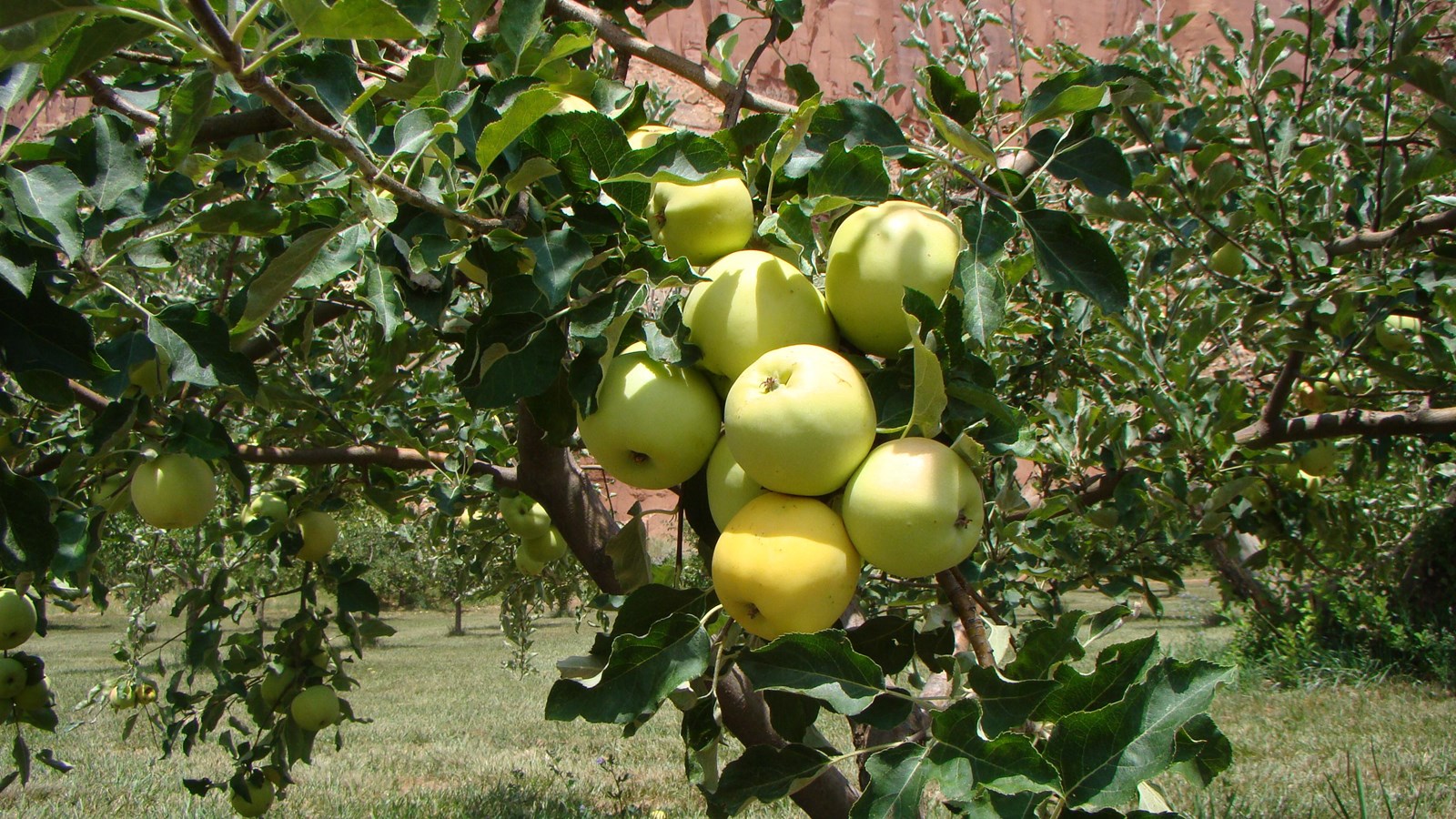Last updated: June 6, 2025
Place
Jackson Orchard

NPS/ Jamie Mansfield
The Fruita District is an emerald in the rough: a pocket of life hidden in a desert landscape of seemingly barren rocks. The confluence of Fremont River and Sulphur Creek creates a riparian zone, a life community associated with a river or stream. Riparian ecosystems are complex and diverse. The concentration of water, nutrients, and food sustains many species of plants and animals. Plant roots filter toxins from groundwater. They also stabilize the soil, so the desert doesn't completely wash away with every flood. Leaves and branches offer shelter and shade for wildlife and hikers. The tall Fremont Cottonwood trees growing throughout Fruita can only thrive with lots of water.
The meeting of the Fremont River and Sulphur Creek has attracted agriculture for thousands of years. Nutrients from the waters makes Fruita more fertile than surrounding areas. Several other features also make this a good spot for farming, including the sheltering cliffs and lower, warmer elevation. Indigenous tribes have harvested scores of wild plants from these lands. They used dry irrigation techniques to grow dozens of crops, including unique types of corn, beans, and squash—also known as the Three Sisters. Pioneers from the Church of Jesus Christ of Latter-Day Saints settled here beginning in the late 1800s. They lived off gardens, livestock, and wild game. The National Park Service now tends over 2,000 trees in 19 orchards to preserve the historic heart of Capitol Reef.
The meeting of the Fremont River and Sulphur Creek has attracted agriculture for thousands of years. Nutrients from the waters makes Fruita more fertile than surrounding areas. Several other features also make this a good spot for farming, including the sheltering cliffs and lower, warmer elevation. Indigenous tribes have harvested scores of wild plants from these lands. They used dry irrigation techniques to grow dozens of crops, including unique types of corn, beans, and squash—also known as the Three Sisters. Pioneers from the Church of Jesus Christ of Latter-Day Saints settled here beginning in the late 1800s. They lived off gardens, livestock, and wild game. The National Park Service now tends over 2,000 trees in 19 orchards to preserve the historic heart of Capitol Reef.
